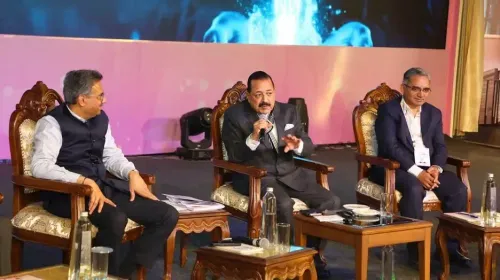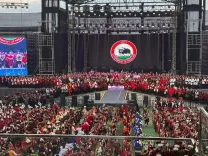What Are the Newly Approved Multitracking Projects Worth Rs 3,399 Crore in Maharashtra and MP?
Synopsis
Key Takeaways
- Approval of railway projects worth Rs 3,399 crore in Maharashtra and MP.
- Completion expected by 2029-30.
- Expansion of 176 km in the railway network.
- Creation of 74 lakh human-days of employment.
- Environmental benefits include reduced CO2 emissions and oil imports.
New Delhi, May 28 (NationPress) The Cabinet Committee on Economic Affairs (CCEA), led by Prime Minister Narendra Modi, has recently given the nod to two major multitracking initiatives in the Indian Railways. These projects, set in Maharashtra and Madhya Pradesh, aim to facilitate swift and efficient transportation for passengers and freight alike.
The projects entail the construction of the Ratlam-Nagda 3rd and 4th lines and the Wardha-Balharshah 4th line. The total anticipated expenditure for these projects is around Rs 3,399 crore, with completion expected by the year 2029-30, as per CCEA reports.
Spanning four districts in both states, these initiatives will expand the Indian Railways' network by approximately 176 km. Moreover, the construction phase is projected to create direct employment opportunities equivalent to 74 lakh human-days.
This initiative promises to enhance travel efficiency, lower logistics costs, minimize oil imports, and diminish CO2 emissions, thereby promoting sustainable rail operations.
As per the CCEA, these projects stem from the PM-Gati Shakti National Master Plan aimed at improving multi-modal connectivity through comprehensive planning, delivering uninterrupted connectivity for the movement of individuals, goods, and services.
These routes are critical for transporting various commodities including coal, cement, clinker, gypsum, fly ash, containers, agricultural goods, and petroleum products.
Capacity expansion is expected to generate additional freight traffic amounting to 18.40 MTPA (million tonnes per annum).
Furthermore, the Railways are poised to aid in realizing climate objectives, significantly cut down logistics expenses, reduce oil imports by 20 crore litres, and lower CO2 emissions by 99 crore kg, equivalent to planting 4 crore trees.
"These projects will also boost logistical efficiency by increasing line capacity on pivotal routes for container, coal, cement, agricultural product transportation, and more. Such enhancements are anticipated to optimize supply chains, thus fostering accelerated economic growth," stated the CCEA.
The government asserts that the enhanced line capacity will greatly improve mobility, leading to better operational efficiency and reliability of services for the Indian Railways. These multitracking proposals are on track to streamline operations and ease congestion.










